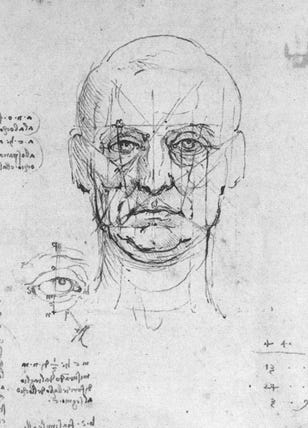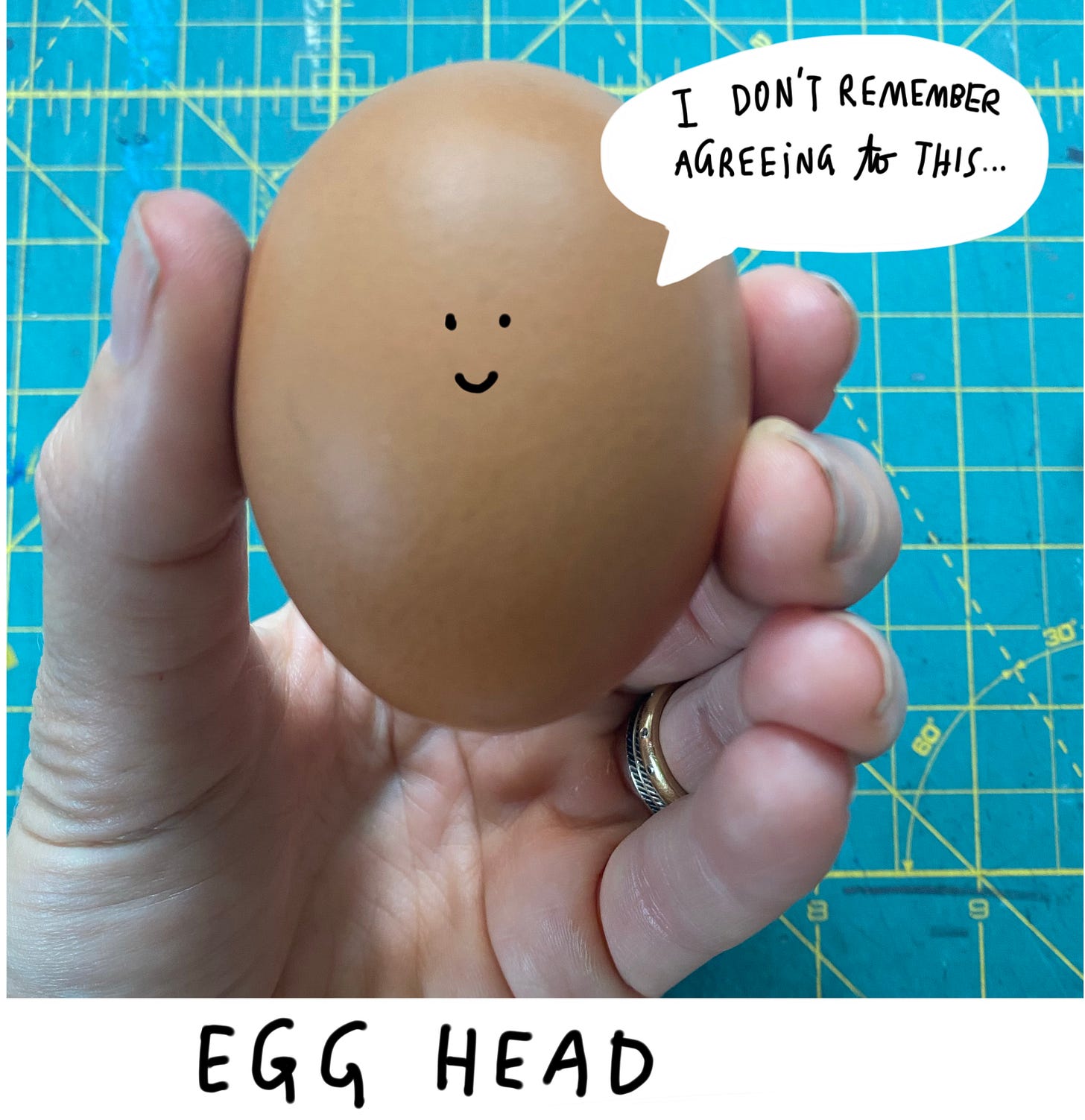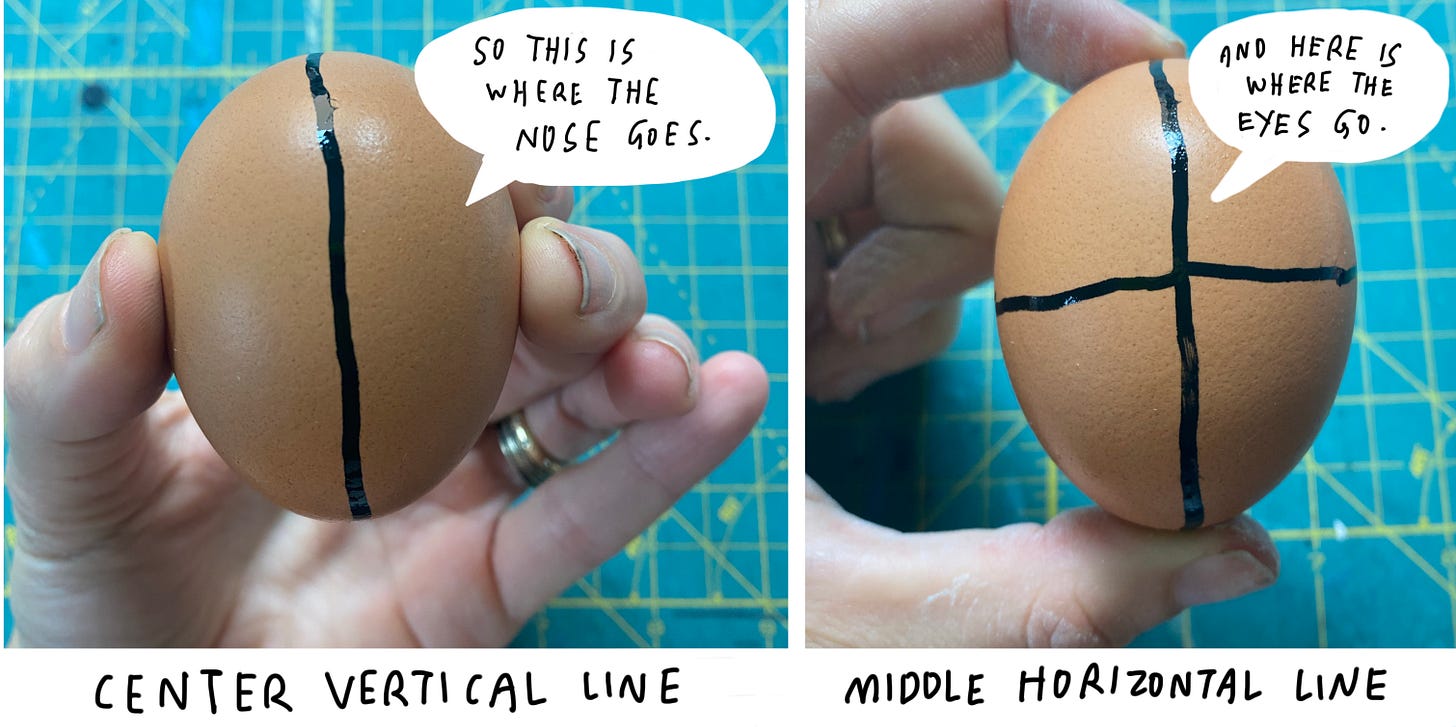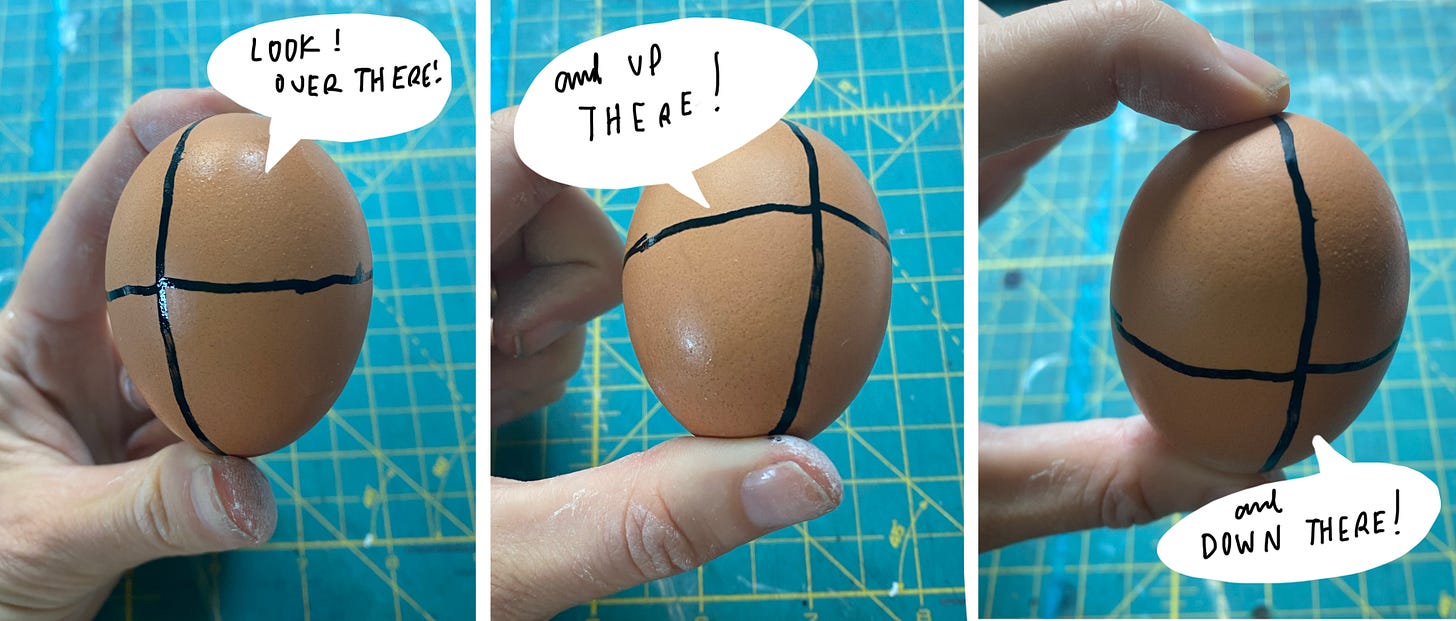Let's face it
Drawing faces is easier than you think with a few simple tricks. Also book recommendations and a new #DrawTogetherGUT assignment.
Helloooo DrawTogether! While this note is for subscribers to the Grown-Ups Table, I think DT Kids and Classrooms would have a lot of fun with today’s lesson, so I’m making this one available to all for free. Subscribers still have exclusive access to the #DrawTogetherGUT assignment and conversation/community.
BOOK REC’S FOR VISUAL STORYTELLING
So, I have to apologize. Last week I jumped right in to making a drawn story without even a how do you do. Creating visual stories can be overwhelming. Or at least they can feel that way at first. It was way uncool of me to take you down that path without suggesting a few books for reference and support. Here you go:
Ivan Brunetti’s Cartooning
Lynda Barry’s Making Comics
Maira Kalman’s Principles of Uncertainty
My own Meanwhile in San Francisco, The City in Its Own Words
The first three are very different, very fantastic primers. We can learn so much by following their exercises and examples. The fourth one is pure self-promotion.
But remember, as good as they are, it’s also important to IGNORE THEM. Often when I look at/read books on technique, I find myself thinking that’s the “right way.” I start ignoring the quiet voice deep inside myself, that first-thought gut instinct. That voice is our most important tool. Never, ever ignore that voice, no matter what any book tells you to do. Other people’s ways of doing things are just tricks to try. Tools to add to your art kit. Which leads us to this week’s topic…
Drawing Faces!
A few of you have said you find drawing people, specifically faces, challenging. I agree. IT IS. Art schools dedicate multiple semesters to learning to draw the figure and the face. And even after that, many people find drawing faces is the hardest thing to get “right.” Luckily, we don’t give a hoot about “right.”
But there is something to be said for learning a basic skill we can choose to use or toss out the window. And there are some simple, fun ways we can start to train our minds eye. Once you understand the basic head shape and have a sense of general proportion, you can create any face - all different backgrounds, shapes and sizes, and expressions. You can also decide if you want to draw the shape of the head first then put features on it, or draw the features first, then put a head around it (the great debate continues.)
You can also ignore all this and make a smiley face on a stick figure. NO RULES IN ART. But for folks wanting to learn the basics, I tried to make it easy and fun and in a way that makes sense to me. I hope it does to you, too.
Shape and Position
While not all heads are like this, the shape of your general human head made up of two overlapping ovals or eggs.
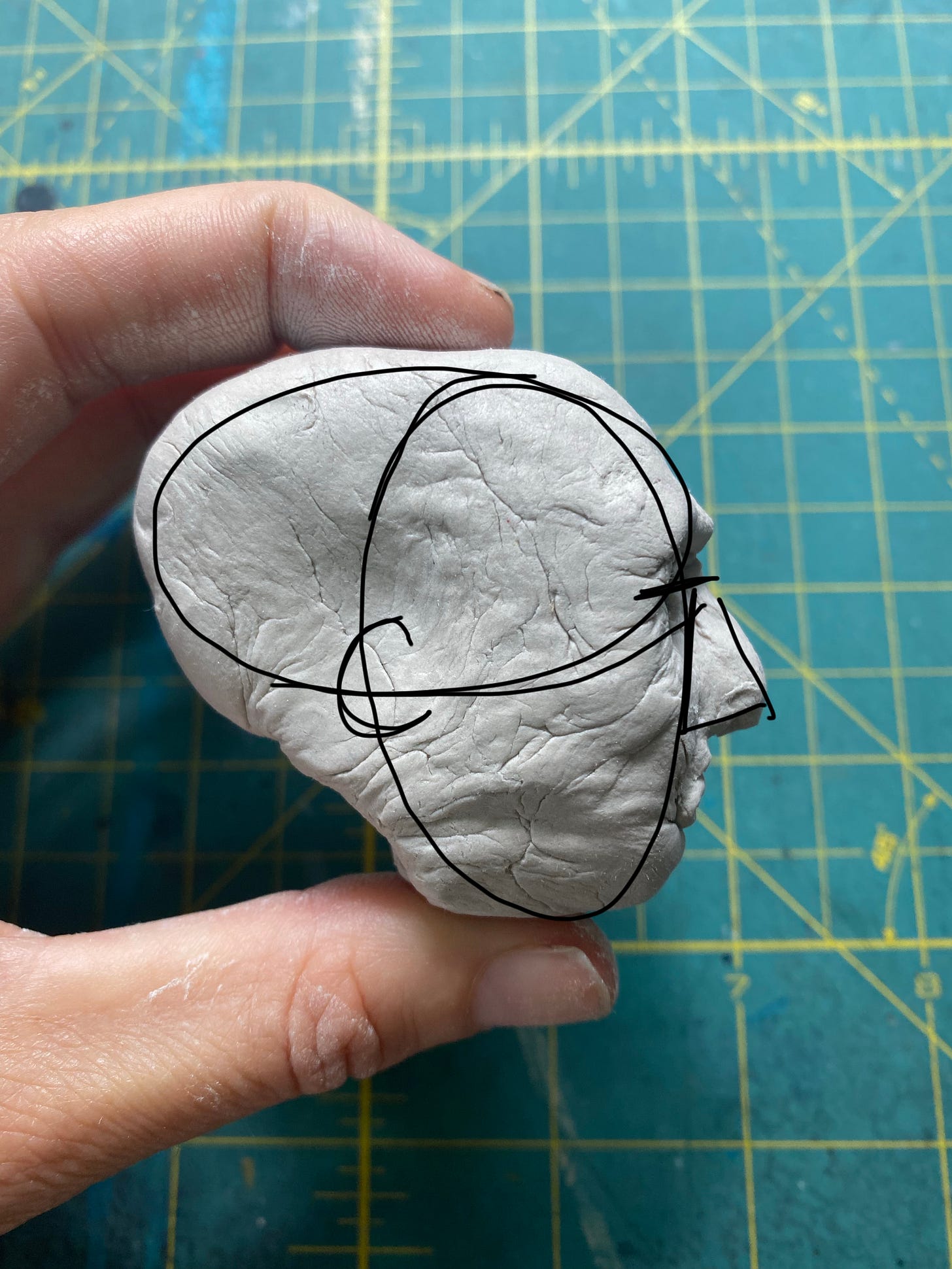
So looking at the two smooshed egg shapes above, let’s call the horizontal one the skull egg, and the vertical one the face egg. Today we’re focusing on the face egg.
First, let’s turn this egg into a basic face egg.
It’s a head! See that? (I know it seems like the eyes are low down, but trust me, that’s really where they go.) We can see which direction it is facing. The egg head above is facing forward. And when we turn it…
We can see how it looks when it turns, and begin to imagine how the face might look when we add on features, right? Here, this’ll make it a little easier:
Egg-sactly. Notice how you only see PARTS of the face depending on where it’s facing. Sometimes you can’t see some parts of the face at all. Of course, this is a super flat face… So let’s see what it looks like when we add a nose shape to the front.
Cool ,right You can see it? So there are complicated ways to draw a face to make it hyper realistic, but we can start to understand how the face works.

Proportion
Maybe you’ve seen these “general face guidelines” folks teach in figure drawing. While they may be generally accurate, they are in NO way a rule or an “ideal.” These ideals were based on able-bodied, old white guy’s ideas of facial perfection (namely: young white guys) and have been used to oppress people. These rules, like all art rules, art a bunch of B.S. And at the same time, it’s useful to have a generalized foundation to push against. So I drew us a new one.
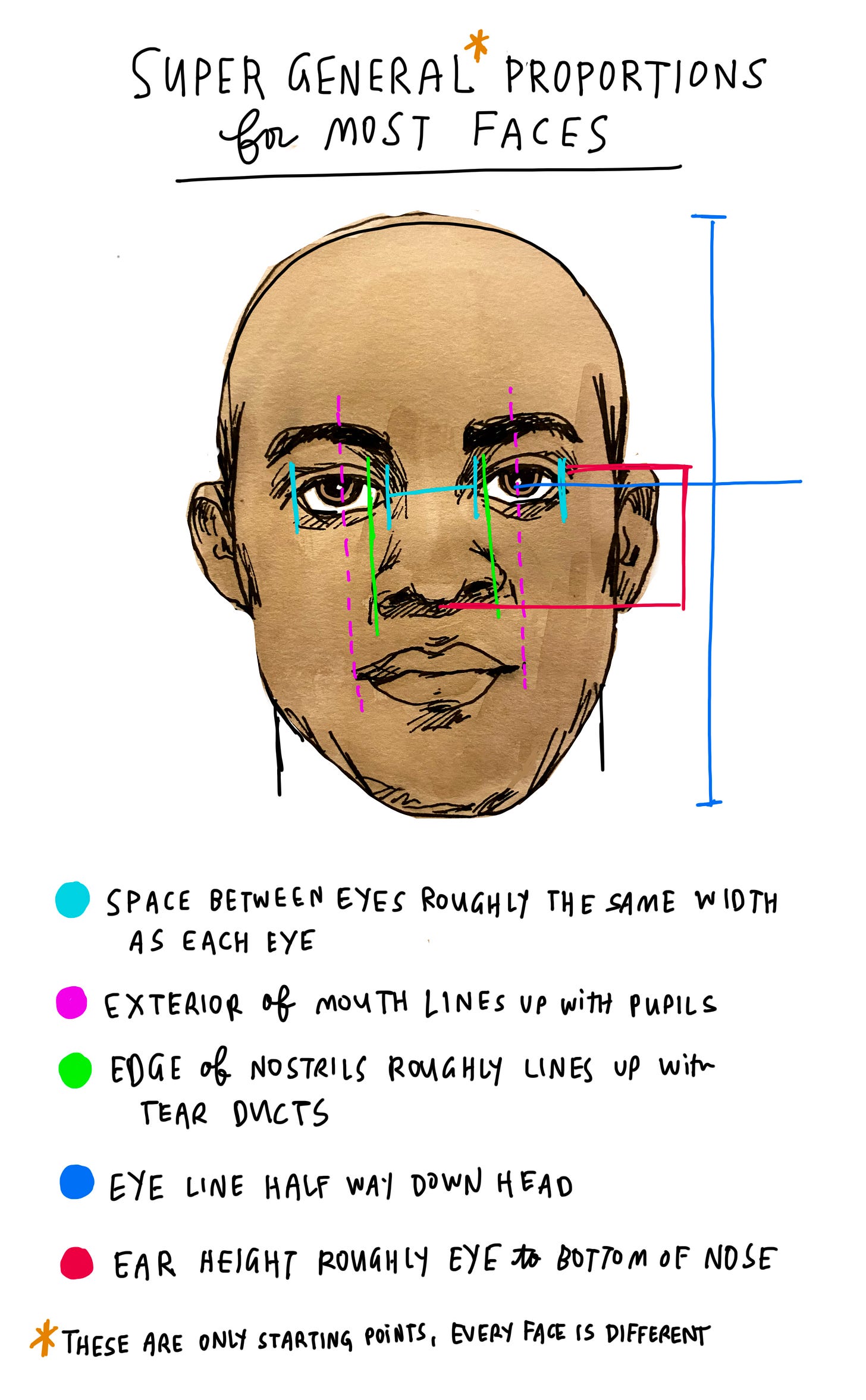
Again, these are general guides, and not rules or ideals. But they are helpful to keep in mind, so when you are drawing a face from observation or imagination, you can ask yourself, “how does this person vary from the general guide?” That might help you decide how to place and adjust features. Hope that helps!
#DrawTogetherGUT Assignment
Okay, your turn! Let’s draw some faces. Here are a couple fun assignments to help practice what you just learned.
Keep reading with a 7-day free trial
Subscribe to DrawTogether with WendyMac to keep reading this post and get 7 days of free access to the full post archives.




